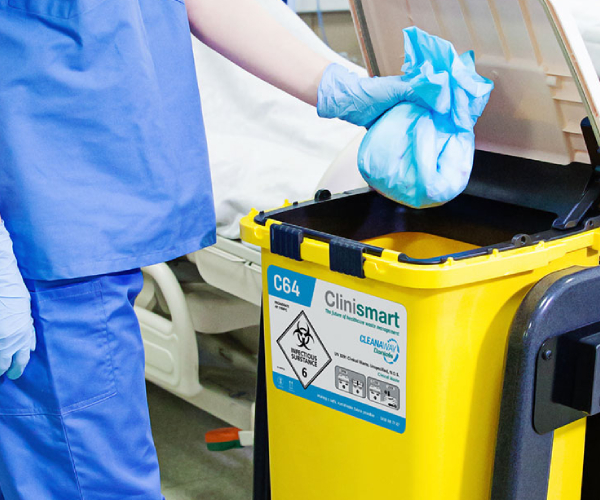How can dental facilities ensure safe waste management practices?
Dental practices often involve hazardous wastes. Hazardous wastes, in this case, can be anything common such as aerosols, electronic wastes, fluorescent tubes, cleaning products and paints. Besides hazardous wastes, dental wastes also include biowastes that must be safely disposed of to avoid potential infections and other risks. Since different wastes need to be disposed of carefully and responsibly, dental care institutions must adhere to certain policies and regulations.
This article explains how dental facilities must manage dental wastes. 4 square Dentistry, one of the best dental clinic in Medavakkam , has listed out the several bio-waste segregations and safety protocols their facility follows. Read here for more information.
But before diving deep into the protocols, here is a brief insight into the type of dental wastes produced by dental facilities.
Understanding the Types of dental wastes
Dental wastes can be broadly classified as hazardous and biological waste. Here is a deep insight into both these types.
Hazardous waste
Wastewater from dental chairs contains mercury and is classified as hazardous waste. Mercury-containing wastewater should be recycled or managed as hazardous waste. All amalgam waste should be sealed and marked before being delivered to the waste disposal facility.
Likewise, dental waste with silver concentrations greater than five parts per million is also classified as hazardous waste. Waste treatment facilities usually use X-ray film to recover silver from waste. Disinfectants and cold sterilisers are also used to recover silver from waste. Fluorescent lamps are yet another universal waste used in dental practices that must be recycled.
Biological wastes
Biological waste disposal is the most important aspect of infection control, as it can serve as a growth medium for microorganisms. Biomedical waste management protocol classifies wastes into three categories: dental amalgam wastes, amalgam traps, and bulk mercury.
4Square Dentistry practices several safety protocols for biowaste segregation to keep their dental facility safe and hygienic. Following are a few measures taken to manage dental wastes in these facilities.
The best practices for managing dental waste
Waste disposal at dental facilities is an essential practice. Dental facilities must follow certain rules and regulations on their premises to ensure the safe disposal of wastes. Here are a few:
- Ensure that the dental equipment is maintained regularly and that all amalgam is disposed of properly.
- A filter’s sludge and air/water separator sludge are recyclable whenever feasible and disposed of properly.
- All hazardous waste must be stored in containers securely closed and inspected weekly for leaks or deterioration.
- Sharps waste and other kinds of biomedical waste should be transported to an approved off-site treatment facility.
- When sharps containers are full, they should be placed in a durable, puncture-resistant, leak-resistant container and permanently sealed before picking up by an appropriate service provider.
- The anatomical waste must be stored in a secure area, labelled with a universal medical symbol, and transported to a dental practice via an approved waste carrier.
- The waste generated in laboratories and surgical facilities needs to be taken in and transported to a licenced incinerator. If there is no suitable site, a secondary containment system should be built, or the floor drainage should be sealed.
- Labels for universal wastes are available from a hazardous waste recycling centre or haulier upon request.
- Recyclable materials are identified in streams of waste that have been separated for recycling or reclamation.

Safe work practices are insisted upon by the best dentist in Medavakkam at their facilities. Here is a quick look at some of the safe practices dental facilities must adhere to:
- Observe cleanliness practices
- Store and label wastes
- Provide separate containers for hazardous, non-hazardous, universal and recyclable wastes
- Maintain detailed information about the waste you generate, especially if you are transporting hazardous waste off-premises
Adhere To These Pollution Prevention Policies
The Central Government issues rules for the management of bio-medical waste. The Pollution Control Board is the governing body for Biomedical Waste Management. The dental facilities are required to adhere to all rules and regulations issued by these governing bodies.
The dental industry produces four types of dental waste, and each type has its own set of standards for proper disposal. Here is a go through of how authorities insist on their disposals.
- Amalgam waste is a type of waste produced by amalgamation and must be properly disposed of. The EPA mandates that amalgam separators achieve a minimum removal efficiency of 95 per cent.
- Hazardous waste poses a significant or potential danger to human health or the environment. The waste can arise in any physical state, and the type of disposal is entirely dependent on the physical state of the waste.
- Pharmaceutical waste is disposed of by taking back the waste for incineration.
- Biohazard waste is a term used to describe biohazardous waste. According to local regulations, Sharps waste is regulated medical waste and must be disposed of in a sharps container.
Wrapping up:
Dental wastes can pose several risks to the environment and to the people who handle them. This needs to be disposed of safely and responsibly. Make sure you follow the steps outlined in this article for safe disposal!




